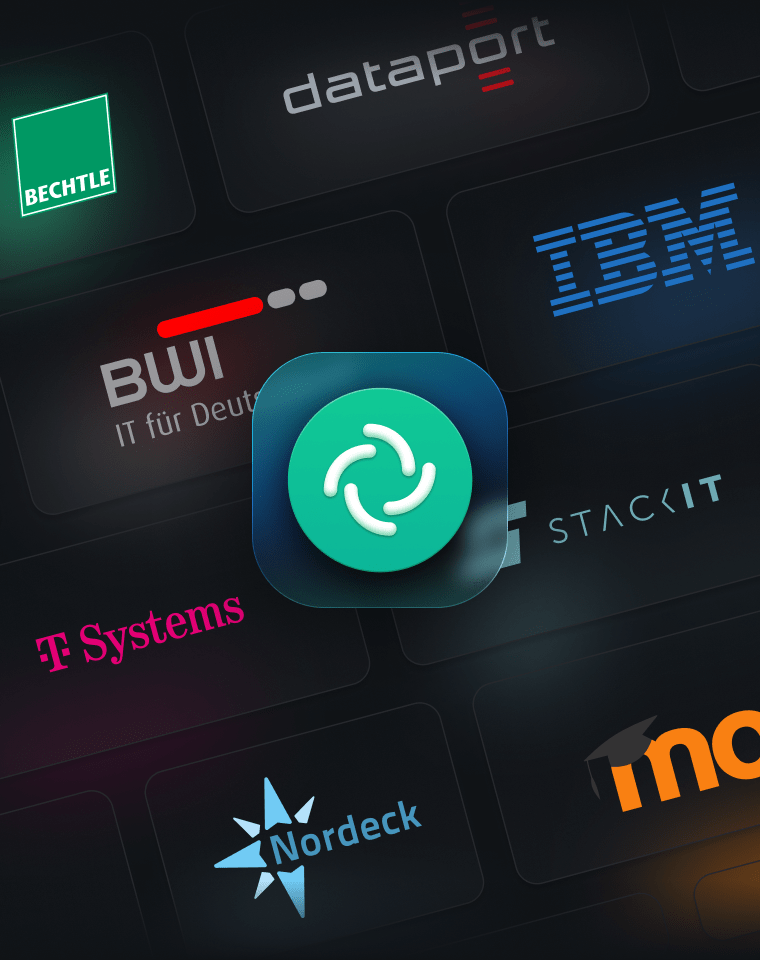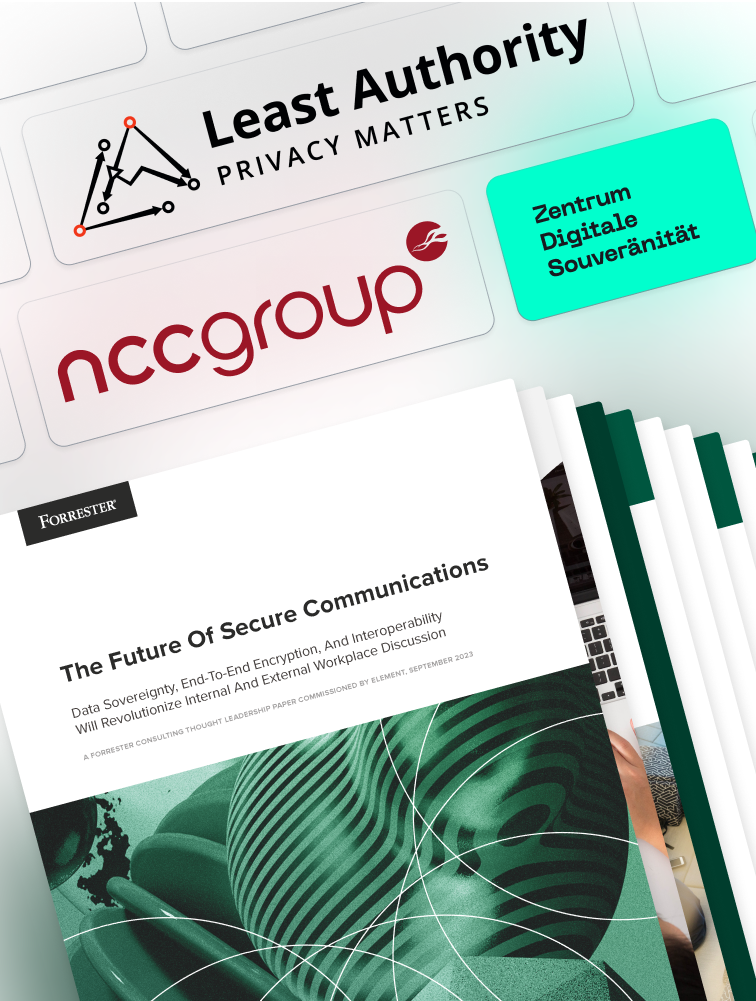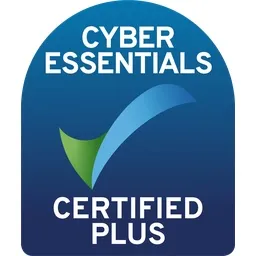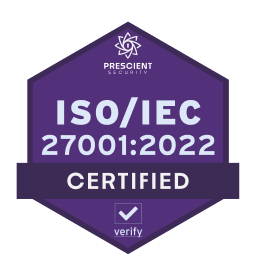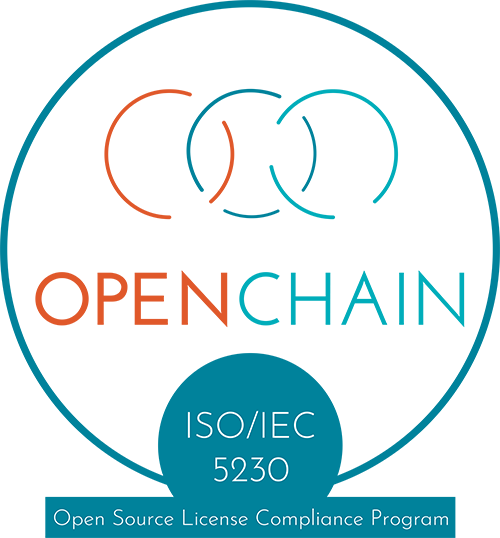Germany is the world leader in digital sovereignty
The German public sector is leading the world with its vision of digital sovereignty - ensuring full control and operation over its data and infrastructure without dependency on Big Tech. Germany has embraced the Matrix protocol as its strategy to deliver secure, decentralized and interoperable communication, letting organizations run their own encrypted messaging and VoIP apps (such as Element) while participating within a wider federated network.
We’ve created ‘Matrix in Germany’ as a cheat sheet to help track the explosive and complex growth of Matrix across Germany’s public sector.
Please use the '
Want to be added
...' forms to share your German Matrix initiative, feature as a partner or ask a question using the
FAQ section
.
Mapping Germany’s Matrix deployments
The first known engagement of Germany’s public sector with Matrix was in March 2018, when the State of Schleswig-Holstein reached out to Element, as the creators of Matrix, to discuss the viability of running Matrix as a sovereign messenger service for its internal communication. Then in 2019,
Dataport
contacted Element to use Matrix to underpin communications for its
Phoenix project
for digital sovereignty across the public sector. At the same time,
BWI
started working with Element to use Matrix to power
BwMessenger
- the official secure messenger for the
Bundeswehr
.
Since then, the Matrix industry in Germany has exploded - with
Gematik
mandating Matrix for interoperable secure communication
across the healthcare industry
in 2021;
BMI
and
ZenDiS
selecting Matrix and Element for the communication layer for the
openDesk
sovereign workplace suite in 2022;
FITKO
investigating Matrix for
secure citizen communication
in 2023, and
universities across the land
converging on Matrix as a self-sovereign yet interoperable communication fabric.
To help navigate the maze of projects, Element has curated a guide to Germany’s flagship Matrix implementations.
BwMessenger
BwMessenger is a fork of Element built by BWI and Element, as a digitally sovereign alternative to WhatsApp. It is the cornerstone of the Bundeswehr's communication infrastructure, used on a daily basis by the entirety of Germany’s Armed Forces.
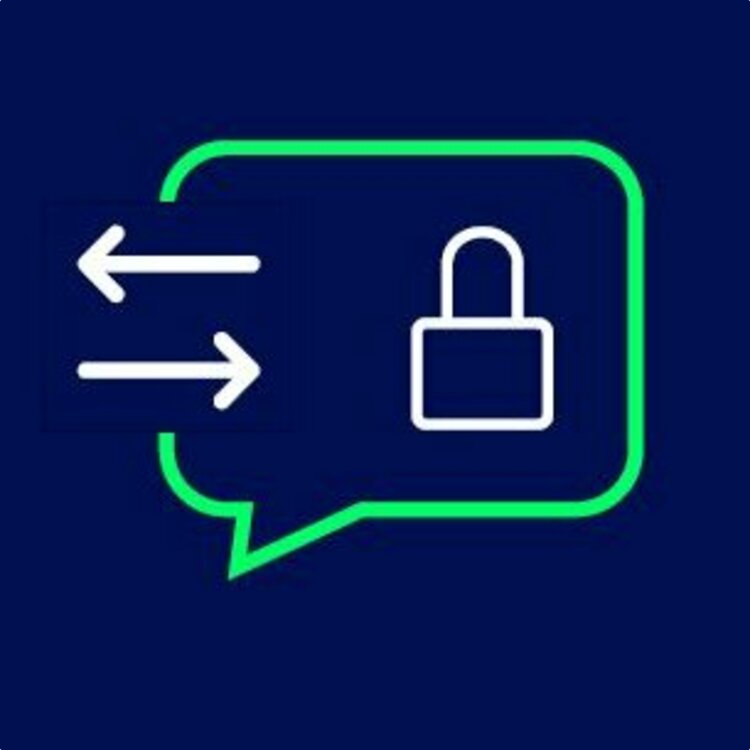
TI-Messenger
TI-Messenger is a Matrix-based real time communication standard specified by Gematik. Beyond Matrix, it adds electronic health professionals cards (eHBAs), electronic institution cards (SMC-B) and a central FHIR directory. As Germany’s mandated standard for real time communications for the healthcare system, it provides secure and data sovereign communication across a large-scale private federation for more than 150,000 healthcare organizations - involving an ecosystem of hosting providers, healthcare providers and insurers, and Matrix vendors including Element, Famedly, Nordeck, Connect2X, StackIT, Bechtle, Akquinet, Arvato, IBM and many more.
openDesk
The Federal Ministry of the Interior (BMI) and Center for Digital Sovereignty (ZenDis) are driving the initiative for an alternative digital sovereign workplace, based on open source software. It gives German public sector organizations a digitally sovereign and open source alternative to proprietary solutions such as Microsoft 365. Sovereign real time communication via Matrix is provided by Element and Nordeck.
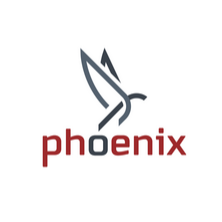
Phoenix Suite
Phoenix is a project led by Dataport to support a digitally sovereign German state. It’s developing an alternative sovereign workplace using web-based open-source modules from a carefully selected range of European vendors, including Element.The dPhoenixSuite can be self-hosted, or secured in data centers owned by public sector IT service providers.
Police 2020
Based on the Saarbrücker Agenda of formulating a vision for the future information architecture of the 20 German police forces, the BMI has initiated the P20 program to drive the digital transformation of the police. The subgroup for real-time communication has recommended the use of Matrix as a unified messaging protocol across all independent forces, to replace the eight incompatible messaging solutions in use today. Element is working with its partners Bechtle and Nordeck to consult P20 and runs proof-of-concept deployments in partnership with Deutsche Telekom for individual police forces. Independently, StashCat has implemented the Matrix protocol in its client.
BundesMessenger
The BundesMessenger initiative is the world’s largest-scale public sector messaging strategy. Led by BWI, BundesMessenger gives Germany’s public administration a purpose-built Matrix-based messaging client that is free of charge. It is tied to a dedicated backend published on OpenCoDE to support self-hosting within the federation of BundesMessenger deployments.

Schools
Many states across Germany adopted Matrix during the COVID19 pandemic as a way to provide secure communication for online learning, and have continued subsequently. For example, in North Rhine-Westphalia, BearingPoint and Element work together to provide communications for 2.5M school children via LOGINEO . In Bavaria, Fujitsu and SDUI provide Element to 1.8M students.

Universities
Universities across Germany and Austria have widely adopted Matrix. Many university faculties and student groups have created their own self-hosted Matrix deployments using FOSS components, and thousands of students have used personal Matrix accounts hosted by free public hosters. Some universities and institutions - such as KIT in Karlsruhe , Humboldt University in Berlin and University Graz - have adopted Matrix as their primary communication platform for tens of thousands of users.
Want to see your project added to this page?
We’re always excited to hear about Matrix projects in Germany. If you are building on Matrix, tell us about your project by filling out
this form
.
Want to see your project added to this page?
We’re always excited to hear about Matrix projects in Germany. If you are building on Matrix, tell us about your project by filling out this form .
What is Matrix?
Matrix is the real time communication layer of the open Web.
-
Decentralized
Organizations achieve digital sovereignty by hosting their own servers, providing them with the freedom to govern their users and manage their data. -
Open standard
Matrix plays a similar role for real time communication as SMTP plays for email. Organizations are free to choose their preferred Matrix-based frontend and backend. -
Natively interoperable
A diverse mix of communication platforms enables organizations to collaborate in a unified manner across their value chains. -
Open source
Most Matrix implementations are open source, meaning anyone can audit, customize and contribute to the code which cultivates innovation, transparency and enhanced security.
The Matrix stack
Any deployment is composed of three layers.
Frontend
There is a wide range of Matrix-based apps such as Element , BwMessenger , Famedly , Trixnity and many more. Most apps can interoperate with any backend although some are tied to a specific backend (such as BundesMessenger or TI-Messenger compliant apps).
Backend
Each Matrix deployment has a backend which hosts its users’ accounts, and replicates their conversations with other deployments.
Professional backends such as
Element Server Suite Pro
provide a full admin interface, auditing, moderation, ID management, high availability and scalability - all of which helps ensure an easy-to-manage and fully compliant communications platform.
Organizations can create a deployment through a number of methods. Find out more details on our
Install
page.
Open standard
Being an open standard,
Matrix
fosters interoperability and collaboration by providing a universally accepted framework, enabling a diverse ecosystem of Matrix-based products to seamlessly work together.
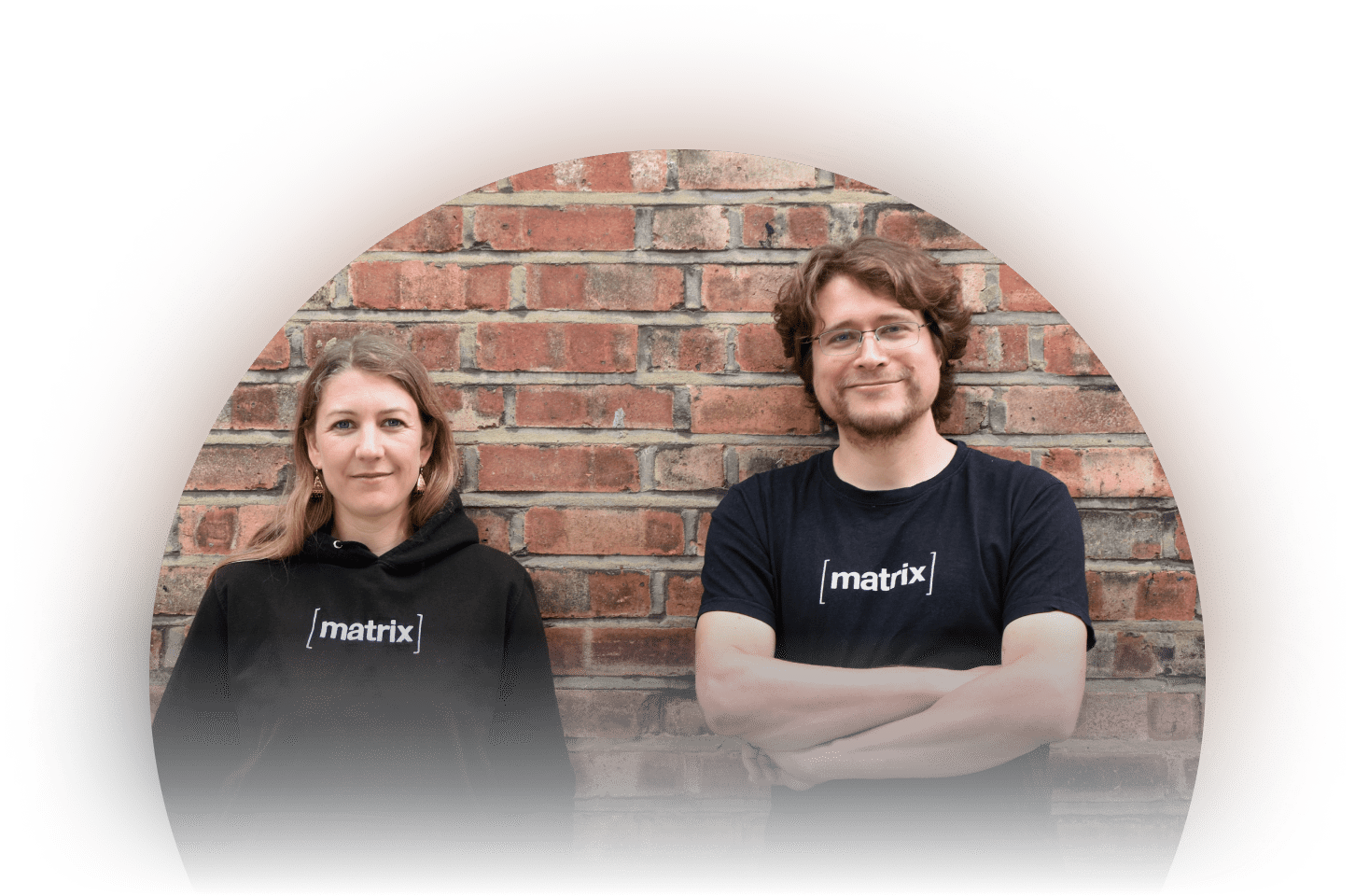
The origins of Matrix
The Matrix.org open source project was started in 2014 by Matthew Hodgson and Amandine Le Pape. Its aim is to provide a decentralized open standard for interoperable real time communication. The core Matrix team then started Element to fund their work in 2017, and in 2018 The Matrix.org Foundation was set up to guide Matrix development and ensure it remains a neutral open standard for the benefit of all. The vast majority of the core Matrix team are still employed by Element today.
users worldwide
deployments
largest public deployment
largest commercial deployment
FAQs
Read frequently asked questions about Matrix in Germany. These answers are provided by the team that created the open standard.
Which Matrix federations interoperate in Germany?
The majority of Matrix servers in the German public sector are openly federated on the public Internet. For instance, all known university deployments federate together openly. However, there are some private federations: as of February 2024, BwMessenger exists in its own federation; TI-Messenger forms its own federation and BundesMessenger forms another federation in turn. However, there are initiatives, for example, to connect OpenDesk in a more open federation in the European context with the Matrix instances of public administration in other countries.
What classifications can you use Matrix at?
Matrix is designed to support both high and low classification environments, and for instance has been deployed at NATO SECRET equivalent. In Germany, there is much work underway to support Vs-NFD classification (with associated constraints on data retention and perfect forward secrecy), and we expect Vs-NFD capable Matrix deployments in 2024. Meanwhile, Matrix supports cross-domain solutions (such as Element’s Cross Domain Gateway), allowing E2EE traffic to span airgaps between different classification networks while enforcing arbitrary DLP rulesets - ensuring that Matrix federations running at different classification levels are still able to interoperate, upholding Security Policy Information Files (SPIFs) taxonomies for classification labeling as required on a per-message and per-conversation basis.
What hosting options are there which are compatible with Germany’s digital sovereignty strategy?
Much like Web servers, Matrix servers can be run in any environment. This allows a wide range of service providers to offer Matrix hosting compatible with Germany’s digital sovereignty strategy - such as Element’s partners at STACKIT, Bechtle, Dataport, Bearing Point and T-Systems.
How does open source software enable digital sovereignty in Germany?
Ensuring that a nation has complete control of its own data is fundamental. The importance of digital sovereignty is heightened in an increasingly complex and volatile world. Big Tech’s proprietary stacks and predatory algorithms risk overexposure and abuse, while digital vulnerabilities are a primary focus for organized crime and hostile actors.
Instead of being beholden to US tech firms and their proprietary systems, Germany’s public sector organizations should have independence over their technology; to host their own data, on their own hardware, in their own country.
Open source software is a good strategic fit because it gives independence and control to public sector organizations; the transparency of open source guards against vendor lock-in and profiteering. It also encourages public money to be invested in public code for the public good.
How does Matrix-based federation work?
One of the key advantages of Matrix is that it brings native interoperability to real time communications. Matrix makes it as easy to connect with people as it is with email.
There are three basic options when thinking about how ‘connected’ you want a Matrix-based deployment.
Unfederated
A single deployment for internal use only.
An organization might want an ‘internal only’ real time communication platform, much like MS Teams, Slack, Wire or Mattermost.
This is simple to create. Just keep the Matrix network ‘unfederated’ and only those on the specific deployment can contact each other.
No one on other Matrix-based deployments can be invited.
Closed federation
A group of organizations opting to connect privately with each other.
A closed federation means that multiple (independent) Matrix deployments (or indeed closed federations) can connect with each other.
Imagine all police forces in Germany, for example, opting into the same federation. The police forces can talk to each other, but other organizations or individuals cannot connect to the federation.
Open federation
Open federations are publicly accessible and can be reached via the open Internet. Connected institutions can communicate openly with each other, as is the case with email. In public administration, for example, not only can different authorities and offices work together securely, they can also connect with citizens and companies. Organizations can communicate internally as well as externally with suppliers, partners or customers. The Matrix standard allows the use of completely different Matrix servers and different Matrix apps without compromising security.
Element provides a number of enhancements to support Matrix-based federation. Advanced identity and access management ensures large numbers of people can be provisioned and deprovisioned, with role-based access and permission. Similarly, authentication can link to Single Sign-On systems.
As federations scale, they may need additional controls within the federated network. Element offers Secure Border Gateways (such as the TI-Messenger Proxy) which enable rules-based access and permission between organizations.
For federations that include a high-side and a low-side - such as police or military - Element provides hardware-based Cross Domain Gateways to inspect traffic for an extra layer of security and protection.
For mission-critical environments, Element also supports disaster recovery and high availability.
What open source licenses does Matrix use?
Matrix is, and always will be, an open communication protocol standardized by an open governance process, curated by the non-profit Matrix.org Foundation.
Element (the company founded by the core Matrix team) adopted the Affero General Public License (AGPL) v3 for the core projects that Element develops such as
Synapse and Dendrite
.
The AGPLv3 requires downstream entities to publish modifications, fostering collaboration and supporting Matrix's continued development - or arrange an alternative license with Element.
Ask a question
No one knows more about Matrix than Element!
You’re welcome to ask the team that created Matrix any questions.
